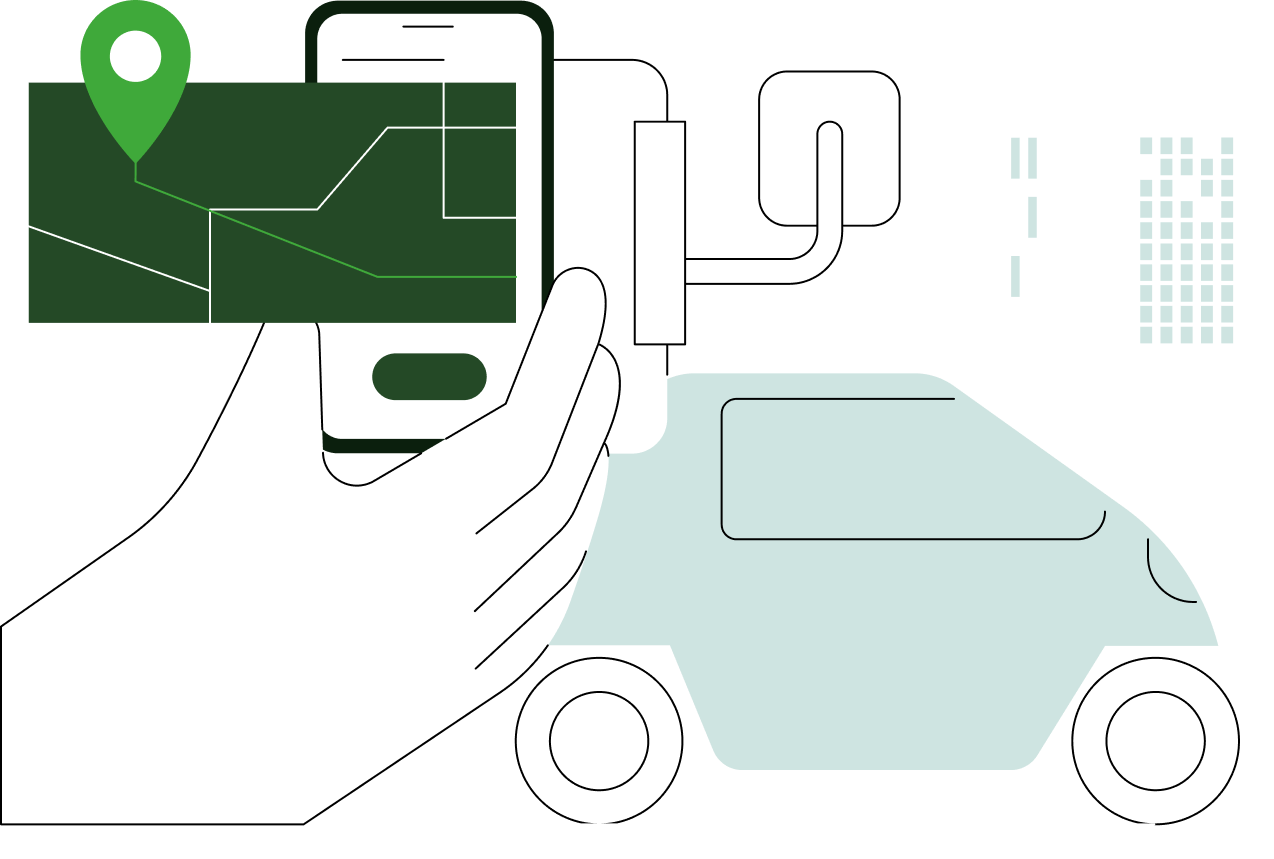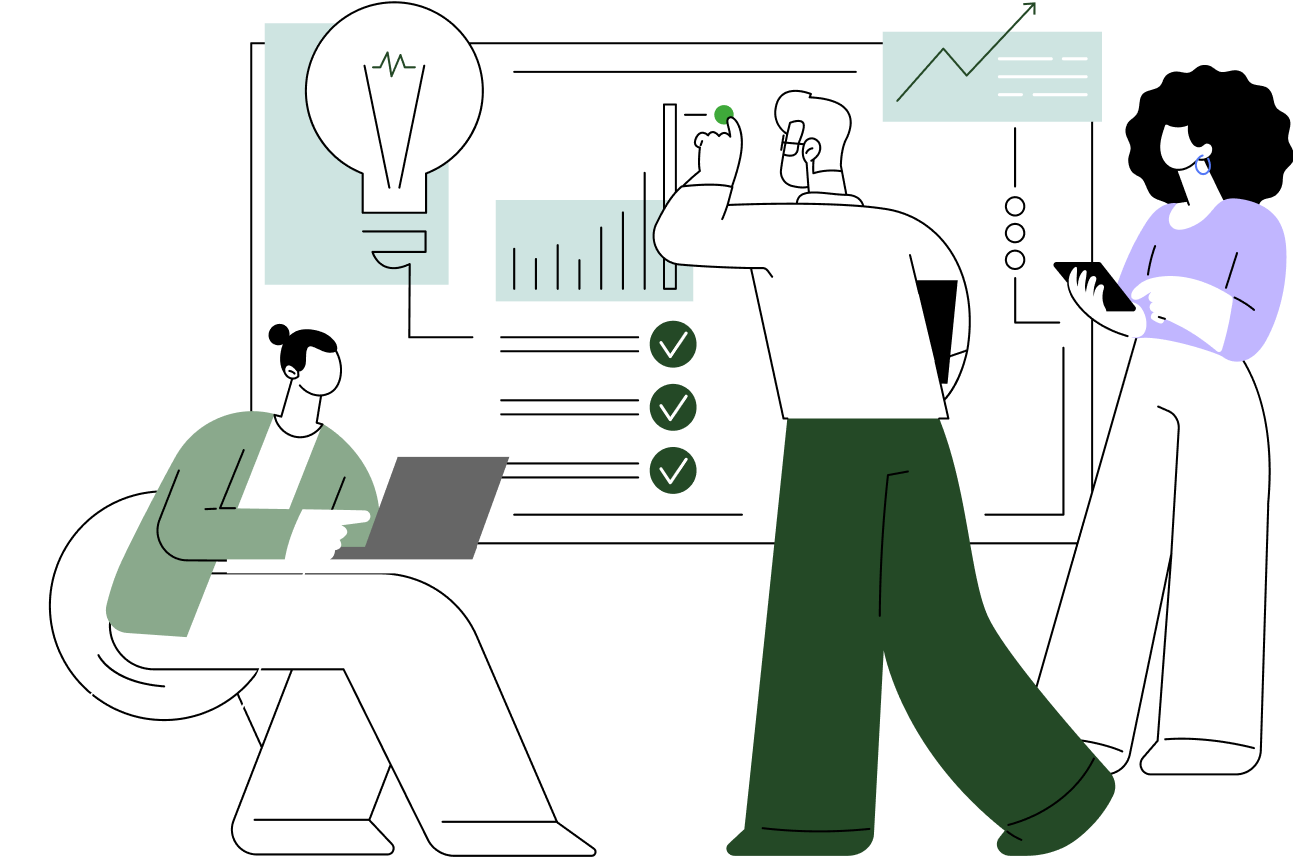No fluff. Just clarity.
Did you know that 90% of the world's data was created in just the last two years? The explosive growth of digital information has transformed data engineering from a backend support role into a critical business function that drives innovation and competitive advantage.
The modern data engineering landscape has evolved far beyond simple extract-transform-load (ETL) processes. Today's data engineers architect complex ecosystems that seamlessly integrate cloud platforms, real-time streaming, and machine learning capabilities to turn raw data into actionable intelligence at unprecedented scales.
Key Takeaway
- Data engineering acts as the backbone for turning raw data into actionable intelligence through systematic collection, storage, and processing methods
- Building data pipelines requires expertise in both technical infrastructure and quality management, with engineers focusing on creating reliable data flows
- Modern data engineering combines batch and stream processing approaches, adapting to business needs while maintaining data integrity
- The field merges data storage methods (warehouses, lakes) with advanced processing techniques, making big data management more accessible
- Cloud platforms and automation tools help data engineers build scalable systems that handle increasing data volumes while meeting business demands
The Data Engineering Foundation
Data engineering shapes how organizations handle and process their information assets. At its core, data engineering fundamentals involves building systems that collect, store, and analyze data at scale.
The field has grown from simple ETL operations to complex data ecosystems that power modern analytics. Today's data engineers work with distributed systems, cloud platforms, and real-time processing tools to create effective data flows.
Key components of modern data engineering include:
- Building stable data pipelines that connect various sources
- Implementing both batch and streaming processes
- Managing data quality across systems
- Creating scalable storage solutions
The technical landscape combines traditional databases with modern tools like Apache Spark and Hadoop. Data engineers now build systems that process information through warehouses, lakes, and hybrid solutions. This allows organizations to:
- Process large datasets efficiently
- Support real-time analytics needs
- Maintain data consistency
- Enable machine learning applications
The Evolving Role of the Data Engineer
Data engineering work has shifted from simple ETL tasks to complex system design and management. Modern data engineers now build advanced pipelines that process information at scale while maintaining high standards for data quality and reliability.
The role requires a mix of technical abilities:
- Automation of data workflows using tools like Apache Airflow
- Real-time data processing implementation
- Management of hybrid cloud environments
- Application of software engineering best practices
Data engineers work closely with data scientists and analysts to:
- Create end-to-end data solutions
- Support machine learning workflows
- Build scalable data architectures
- Implement data quality checks
The position now overlaps significantly with software engineering and data science. Engineers need strong programming skills in Python and SQL, plus knowledge of distributed systems and cloud platforms. This technical foundation helps them design robust solutions that meet growing data demands.
Understanding Big Data
The Three V's form the foundation of handling large-scale data:
- Volume: Data sets ranging from terabytes to petabytes that exceed traditional storage methods
- Variety: Multiple data formats including structured, semi-structured, and unstructured information
- Velocity: Speed at which organizations generate and process new data
Managing big data presents specific technical hurdles:
- Storage allocation across distributed systems
- Processing efficiency at scale
- Data quality maintenance
- Cost-effective resource usage
Organizations use specialized tools to handle these challenges:
- Apache Hadoop for distributed storage
- Apache Spark for data processing
- NoSQL databases for flexible data models
- Cloud platforms for scalable infrastructure
These solutions help companies:
- Process massive datasets efficiently
- Extract meaningful patterns
- Support data-driven decisions
- Scale operations as needed
Data Architecture Paradigms: Lambda vs. Kappa
Lambda Architecture splits data processing into batch and stream paths. The batch layer handles large data volumes thoroughly, while the stream layer processes real-time data. Both layers merge to create complete views for analysis.
Kappa Architecture takes a different approach by treating all data as streams. This model runs everything through a single processing pipeline, making system maintenance simpler but potentially sacrificing some batch processing benefits.
The choice between these models depends on specific needs:
- Lambda works well when you need:
- Complete historical analysis
- Real-time updates
- Separate optimization of batch and stream processes
- Kappa fits better for:
- Stream-first operations
- Simpler maintenance requirements
- Unified code bases
Real-world applications show distinct patterns:
- Financial systems often use Lambda for both historical analysis and live trading
- Social media platforms prefer Kappa for continuous engagement metrics
- IoT systems may choose either based on data freshness requirements
Data Processing Approaches
Data processing methods split into distinct categories based on timing and data handling needs:
Batch Processing:
- Processes large data sets at scheduled intervals
- Handles historical data analysis efficiently
- Reduces computing costs through planned resource use
- Works well with data warehouse loads
Stream Processing:
- Processes data records as they arrive
- Supports real-time analytics and monitoring
- Requires continuous system availability
- Uses tools like Apache Kafka and Flink
Hybrid Processing Methods:
- Combine batch and stream capabilities
- Allow flexible data handling based on needs
- Support both historical and real-time analysis
- Process different data types appropriately
Common applications include:
- Financial systems using streams for trades, batch for reports
- Manufacturing combining real-time sensor data with periodic analysis
- Retail mixing point-of-sale streams with nightly inventory updates
Traditional ETL vs. Modern ELT
ETL (Extract, Transform, Load) represents the classic data processing method where data changes happen before storage. ELT (Extract, Load, Transform) moves transformation to occur after loading data into the target system.
The key differences include:
- ETL processes data before storage, limiting scale
- Modern ELT processes loads raw data first, enabling flexible analysis
- ETL requires separate processing resources
- ELT uses target system computing power
ELT shows specific strengths in cloud settings:
- Quick data ingestion without preprocessing
- On-demand scaling of compute resources
- Support for various data types
- Lower maintenance requirements
Choosing between approaches depends on:
- Data volume - ELT handles larger datasets better
- Processing needs - ETL works for strict data rules
- Storage costs - ETL reduces storage requirements
- System compatibility - Some platforms prefer ETL
Organizations often use both methods:
- Financial services using ETL for compliance data
- Tech companies applying ELT for user analytics
- Healthcare mixing approaches based on data type
Data Storage and Management
Modern data architectures use three main storage approaches to handle different data needs:
Data warehouses serve as structured repositories that:
- Store processed data in organized schemas
- Support complex analytical queries
- Maintain data consistency
- Enable business intelligence tools
Data lakes function as large-scale storage systems that:
- Hold raw data in native formats
- Support varied data types
- Allow flexible data access
- Reduce initial processing costs
The lakehouse model combines approaches by:
- Using data lake storage capabilities
- Adding warehouse management features
- Supporting both structured and raw data
- Providing ACID transaction controls
Each option fits specific use cases:
- Financial services prefer warehouses for reporting
- Research organizations use lakes for scientific data
- Tech companies adopt lakehouses for ML workloads
Cloud-based Data Engineering
Moving data operations to the cloud brings specific advantages for organizations:
- Pay-as-you-go pricing reduces upfront costs
- On-demand scaling meets changing workloads
- Built-in tools speed up development
- Geographic distribution improves performance
Major cloud platforms offer distinct data tools:
AWS:
- Data engineering fundamentals guide platform selection
- S3 for object storage
- EMR for data processing
Google Cloud:
- BigQuery for analytics
- Cloud Storage for data lakes
- Dataflow for streaming
Azure:
- Synapse Analytics for warehousing
- Data Lake Storage for raw data
- Databricks for processing
Cloud migration requires planning around:
- Data security controls
- Network bandwidth needs
- Integration with local systems
- Compliance requirements
Companies implement hybrid approaches by:
- Keeping sensitive data on-premises
- Processing analytics in the cloud
- Using multi-cloud strategies
- Building failover capabilities
Data Pipeline Design and Implementation
Data pipelines connect information sources to final destinations through structured workflows. These systems include:
- Input data collection points
- Processing stages for data cleaning
- Storage systems for holding results
- Output layers for analytics access
Key components work together to:
- Move data between systems efficiently
- Handle errors and retries automatically
- Track data lineage across stages
- Monitor performance metrics
Best practices focus on:
- Building modular pipeline segments
- Adding data quality checks
- Including error handling
- Setting up monitoring alerts
Engineers use specific tools:
- Apache Airflow for workflow scheduling
- Prometheus for system monitoring
- Git for version control
- Docker for containerization
These elements support:
- Consistent data processing
- Reliable system operations
- Quick problem identification
- Easy maintenance procedures
Data Quality and Governance
Data quality management forms a key part of successful engineering projects. Organizations need reliable data to make informed decisions. This requires:
- Systematic data validation checks
- Clear ownership of data assets
- Standard operating procedures
- Regular quality audits
Data governance frameworks provide structure through:
- Defined roles and responsibilities
- Documented data lineage tracking
- Access control policies
- Regular compliance reviews
Engineers implement these standards using specific tools:
- Great Expectations for testing data quality
- Apache Atlas for metadata management
- Collibra for data cataloging
- dbt for transformation testing
Key benefits include:
- Reduced errors in analytics
- Better regulatory compliance
- Increased user trust
- Lower maintenance costs
Organizations track quality metrics like:
- Completeness of records
- Accuracy of values
- Timeliness of updates
- Consistency across systems
Scalability and Performance Optimization
Building data systems that handle growing workloads requires specific architectural approaches:
- Horizontal scaling adds processing nodes
- Vertical scaling increases single-node power
- Distributed processing splits workloads
- Microservices break down complex operations
Performance optimization techniques focus on:
- Smart data partitioning strategies
- Efficient indexing methods
- Strategic data caching
- Query performance tuning
Data engineering fundamentals support scale through:
- Parallel processing capabilities
- Load balancing across nodes
- Fault tolerance mechanisms
- Resource allocation methods
Key tools and platforms include:
- Apache Hadoop for distributed storage
- Spark for large-scale processing
- Redis for high-speed caching
- PostgreSQL with partitioning
Organizations implement these methods by:
- Monitoring system metrics
- Testing scaling limits
- Planning capacity needs
- Optimizing resource use
Emerging Trends in Data Engineering
AI and machine learning now shape modern data workflows through:
- Automated data preparation steps
- Smart quality detection systems
- Pattern recognition in data flows
- Predictive pipeline management
Real-time analytics capabilities expand through:
- Event-driven architectures
- Low-latency processing methods
- Instant data availability
- Continuous monitoring systems
Data fundamentals and concepts bring new approaches by:
- Moving to domain-oriented design
- Creating data product thinking
- Supporting self-service platforms
- Enabling distributed ownership
Key implementation patterns include:
- Using machine learning for anomaly detection
- Building real-time dashboards
- Setting up domain-specific data teams
- Implementing federated governance
Organizations adopt these trends through:
- Gradual technology updates
- Team structure changes
- Process improvements
- Skills development programs
Skills and Tools for Data Engineers
Modern data engineers need specific technical capabilities to build effective data systems. Primary programming requirements include:
- Python for pipeline development and automation
- SQL for database operations and queries
- Scala when working with Apache Spark
Big data technologies form another essential skill area:
- Apache Hadoop for distributed storage
- Apache Kafka for stream processing
- Apache Spark for large-scale data analysis
Data modeling fundamentals help engineers:
- Design efficient database schemas
- Create dimensional models
- Structure data warehouses
- Plan data lake organization
Common tools include:
- dbt for data transformations
- Airflow for workflow orchestration
- Snowflake for cloud platforms
- Terraform for infrastructure code
Engineers also work with:
- Git for version control
- Docker for containerization
- Jenkins for CI/CD pipelines
- Kubernetes for container management
Ethical Considerations in Data Engineering
Data privacy forms the foundation of responsible engineering practices. Organizations must protect personal information through:
- Data minimization principles
- Clear consent mechanisms
- Strong access controls
- Regular security audits
Responsible data handling requires specific steps:
- Implementing data anonymization
- Setting retention periods
- Creating audit trails
- Establishing data deletion procedures
GDPR and CCPA regulations set standards for:
- User data rights management
- Cross-border data transfers
- Understanding data protection frameworks
- Breach notification procedures
Engineers build systems with privacy features:
- Encryption at rest and in transit
- Role-based access control
- Data masking capabilities
- Automated compliance checks
Best practices include:
- Regular privacy impact assessments
- Documentation of data flows
- Staff training programs
- Incident response plans
Future of Data Engineering
Edge computing brings data processing closer to sources by:
- Moving compute power to local devices
- Reducing network latency
- Processing IoT sensor data locally
- Supporting faster decision-making
Technical advances shape the field through:
- Quantum computing applications
- Advanced automation tools
- Improved machine learning integration
- New storage technologies
Organizations face specific challenges:
- Processing data at increasing scales
- Managing real-time analytics needs
- Maintaining system performance
- Balancing cost and efficiency
Successful teams prepare by:
- Learning new technologies regularly
- Building flexible architectures
- Understanding business needs
- Testing emerging solutions
Key development areas include:
- Automated data quality systems
- Advanced streaming capabilities
- Hybrid processing methods
- Smart resource management
Conclusion
As organizations continue to generate massive amounts of data, the role of data engineering will only grow in importance. The convergence of edge computing, artificial intelligence, and advanced automation is reshaping how we build and maintain data systems, creating new opportunities and challenges for engineers to solve.
The successful data engineers of tomorrow will need to balance technical expertise with business acumen, focusing on creating scalable, efficient systems while maintaining high standards for data quality and security. By staying current with emerging technologies and best practices, data engineers can help their organizations unlock the full potential of their data assets.















